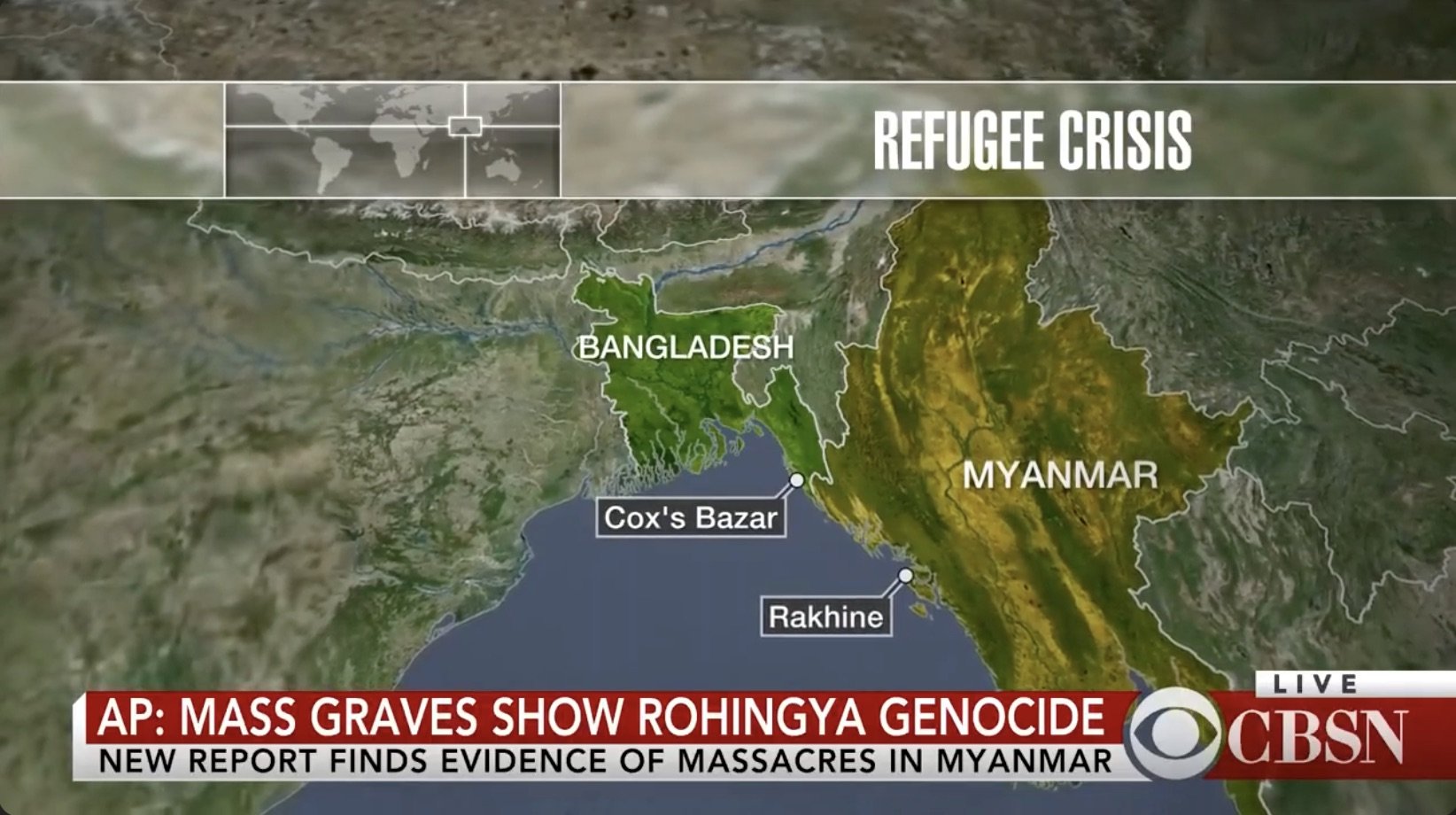These revelations prove the systematic slaughter of Muslim civilians by the Myanmar military, with help from Buddhist neighbors, in the Rakhine province.
Several of the witnesses who are lucky to be alive told reporters of their harrowing experiences on that day, last August 27. Noor Kadir and 14 other Rohingya Muslims in the Myanmar village of Gu Dar Pyin were choosing players for a soccer-like game when gunfire cut most of them down. It was the Myanmar military.
When the shooting stopped, only Kadir and two others remained alive, having fled. Days later, Kadir returned to find six of his friends among the bodies in two graves. The faces of the men had been burned away by acid or blasted apart by bullets, and Kadir only was able to identify his friends by the colors of their shorts.
“It was a mixed-up jumble of corpses piled on top of each other,” Kadir told the reporters.
The graves are simply the latest evidence of a genocide that has been taking place in the Rakhine district of western Myanmar. The Rohingya have long been persecuted in Buddhist-dominated Myanmar, but the killings began last year and based on the new evidence, they continue.
Myanmar has cut off access to Gu Dar Pyin, but satellite images from DigitalGlobe along with video reveal the village has been wiped out, the homes reduced to ash. So far, a list of 75 dead has been compiled by community leaders in Bangladesh, where nearly 700,000 Rohingya have fled into refugee camps. Based on eyewitness testimony of the survivors, the death toll for that town could reach 400.
Last November, then-U.S. Secretary of State Rex Tillerson visited Myanmar and labeled what he witnessed there as “ethnic cleansing,” adding that what his department knows of occurrences in the Rakhine state “has a number of characteristics of crimes against humanity.”
Myanmar’s leaders repeatedly have denied such claims, despite the evidence. Ironically, the nation’s political leader, State Counsellor Aung San Suu Kyi, is a recipient of the Nobel Peace Prize.






















